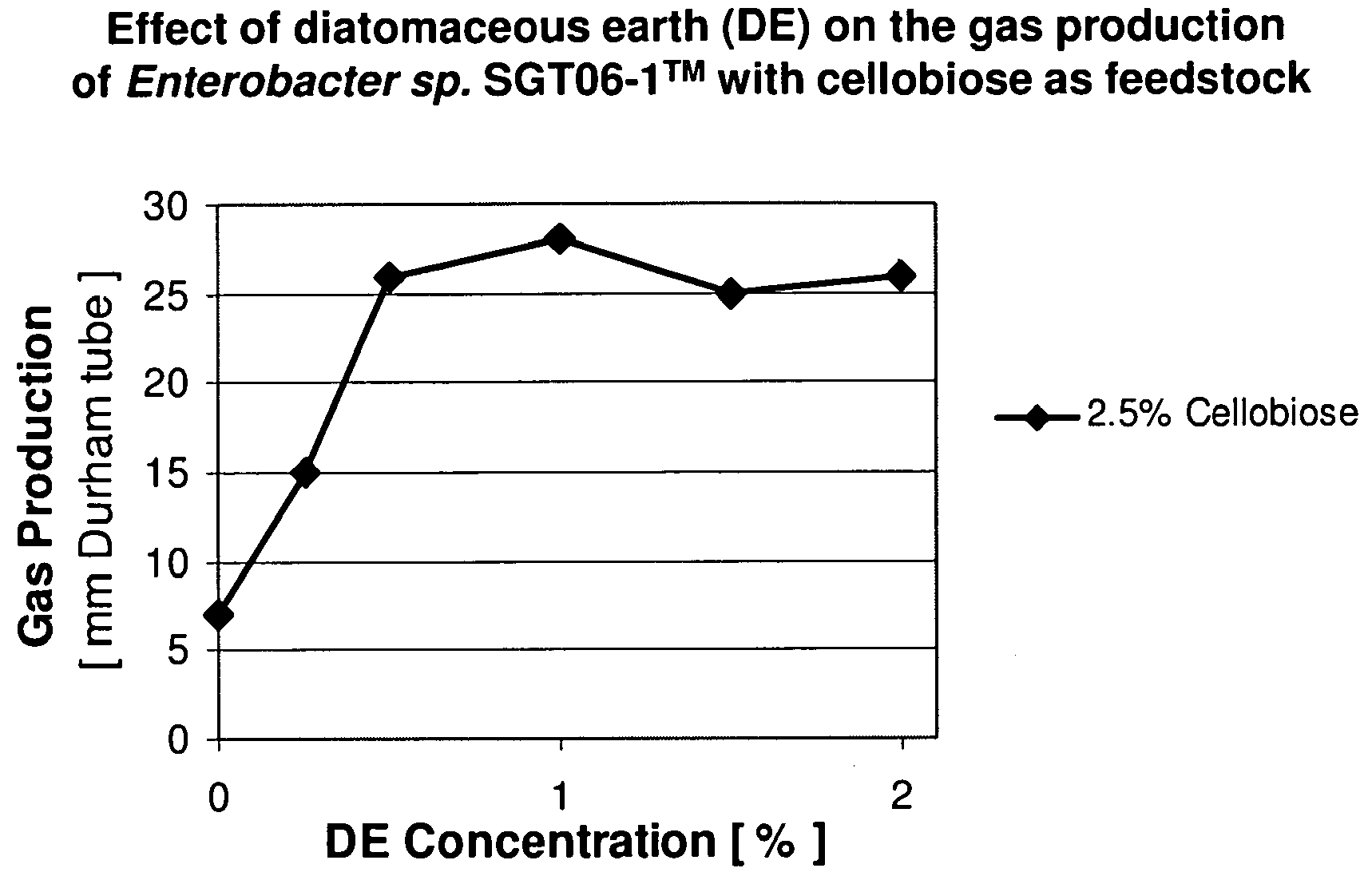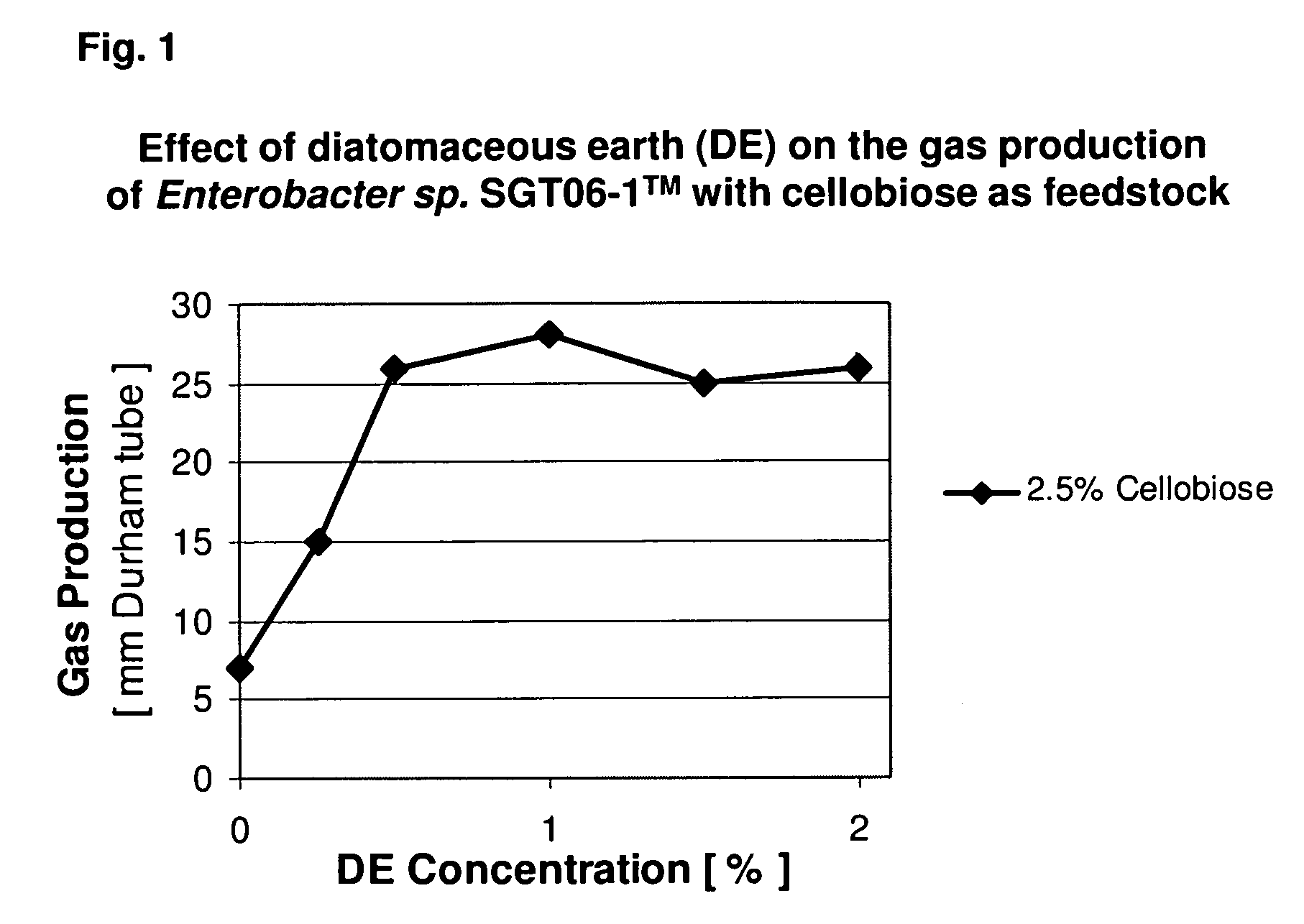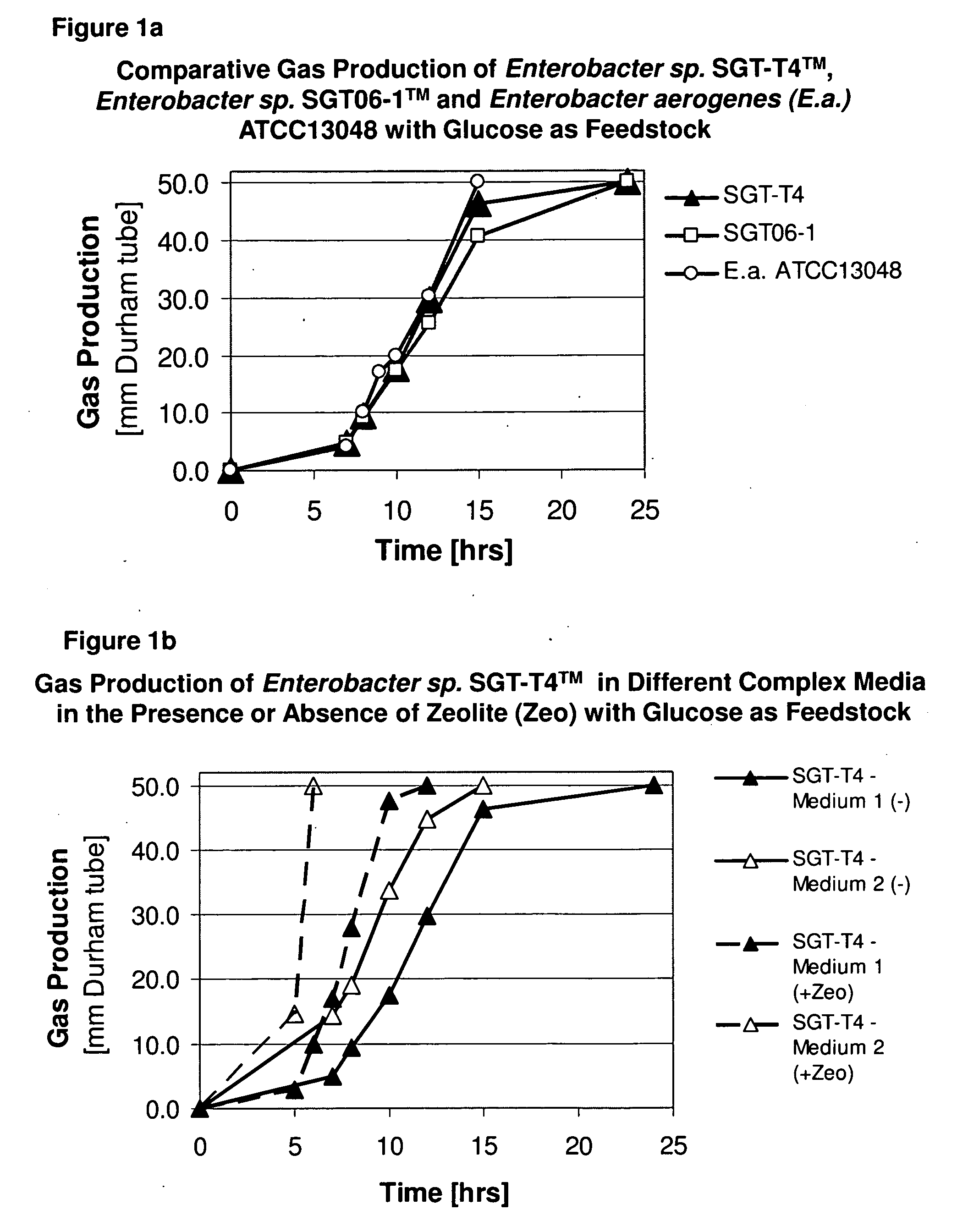Microorganisms and methods for increased hydrogen production using diverse carbonaceous feedstock and highly absorptive materials
a carbonaceous feedstock and microorganism technology, applied in the field of hydrogen gas production, can solve the problems of increasing the hydrogen gas production rate to more than 50 percent, biosafety concerns or cost-intensive approaches, etc., and achieves the effects of increasing transportation energy, high cell densities, and low cos
- Summary
- Abstract
- Description
- Claims
- Application Information
AI Technical Summary
Benefits of technology
Problems solved by technology
Method used
Image
Examples
example 1
General
Environmental Sampling
[0166]The SGT-T4™ microorganism of the disclosure was isolated from the dissected gut of a termite species found in the U.S.A. For isolation, the gut of the surface-sterilized and dissected termite was carefully removed under sterile conditions, minced and transferred into sterile basic growth medium (6 g Tryptone, 3 g yeast extract, 10 g glucose, 0.3 g MgSO4, 0.02 g CaCl2, 67 mM K2HPO4 / NaH2PO4 buffer, pH 7.0 in 1 liter distilled water). Serial solutions of the dissolved gut homogenates were made in the basic growth media and then incubated under aerobic and anaerobic conditions at 30° C. for several days. Aliquots of test tubes showing bacterial growth were streaked onto the surface of selective agar plates containing growth media and incubated at 35° C. for one to three days in a humified incubator.
Growth Medium, Isolation and Cultivation
[0167]Single colonies of the plates grown under aerobic and anaerobic conditions were picked, re-inoculated in basic...
example 2
Measurement of Gas and Hydrogen Production
[0168]Picked individual colonies were tested for total gas production using inverted Durham test tubes filled with either basic growth medium (10 ml) as described above or filled with other complex media (10 ml) as described in more detail in the examples below. Alternatively, total gas production of isolated colonies was detected using the BBL enterotube testing system. During this screening effort a microorganism, termed SGT-T4™, was discovered as a bacterium with the highest total gas production within a time period of less than 24 hours.
[0169]Hydrogen gas production of the microorganism was measured and achieved using following experimental set-up and incubation conditions. An aliquot (350 μl) of an over night culture of SGT-T4™ (grown in modified basic growth medium as described above) was inoculated into 50 ml of sterile complex medium 1 (14 g K2HPO4, 6 g KH2PO4, 5 g peptone, 2 g (NH4)2SO4, 0.2 g MgSO4×7H2O, 1 ml trace element solution...
example 3
Biochemical Analysis and Identification
[0171]An isolated colony of SGT-T4™ was inoculated into basic growth medium and grown at 37° C. between 12-24 hours. Morphological examinations and cell counting were performed with a compound light microscope (Olympus, Japan) using the oil immersion method. Gram-staining, which was performed by the Hucker method, and motility testing using the semisoft agar medium method revealed that the high hydrogen gas producing microorganism is a gram-negative, motile, non-sporulating and non-capsulated short rods which grow under aerobic and anaerobic growth conditions (see ‘General Properties’ in Table 1).
TABLE 1GENERAL PROPERTIES OF SGT-T4Growth AbilityStrainSGT-T4AerobicYesGram StainingNegativeAnaerobicYesShapeshort rodTryptone-Yeast WaterYes*MotilityMotileTryptone-Yeast WaterYes*(+Glucose)SporeNon-sporeMinimum MediumNo*CapsuleNoMinimum MediumYes*(+Glucose)*= under aerobic growth conditions; 1% glucose as carbon source
[0172]Based upon further examined...
PUM
 Login to View More
Login to View More Abstract
Description
Claims
Application Information
 Login to View More
Login to View More - R&D
- Intellectual Property
- Life Sciences
- Materials
- Tech Scout
- Unparalleled Data Quality
- Higher Quality Content
- 60% Fewer Hallucinations
Browse by: Latest US Patents, China's latest patents, Technical Efficacy Thesaurus, Application Domain, Technology Topic, Popular Technical Reports.
© 2025 PatSnap. All rights reserved.Legal|Privacy policy|Modern Slavery Act Transparency Statement|Sitemap|About US| Contact US: help@patsnap.com



